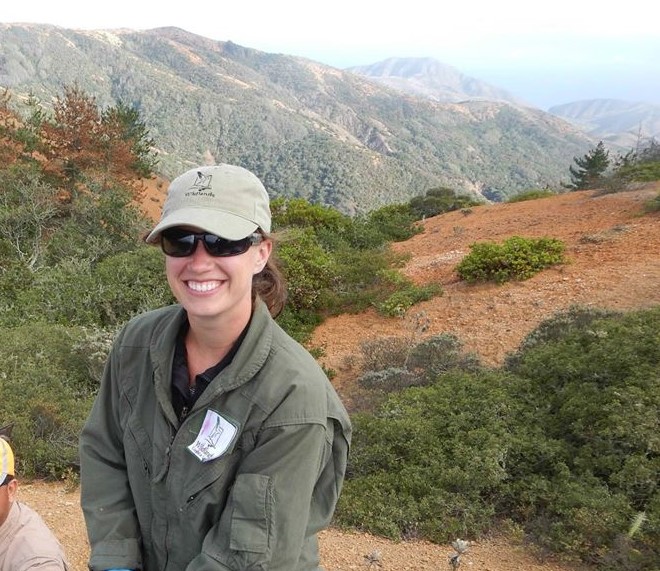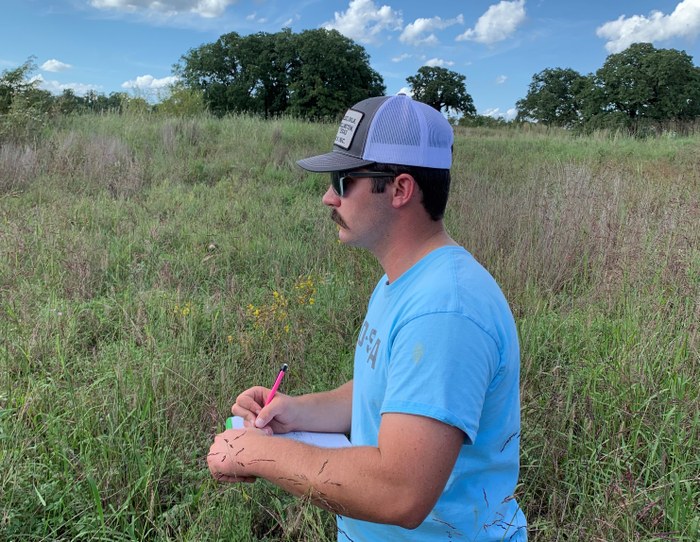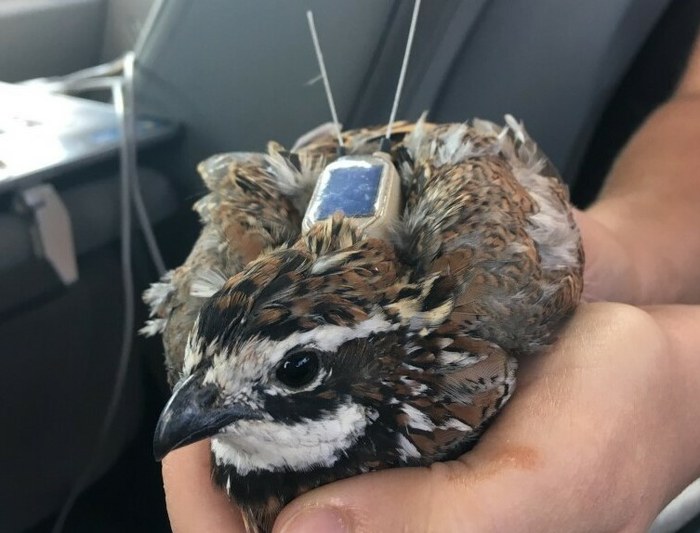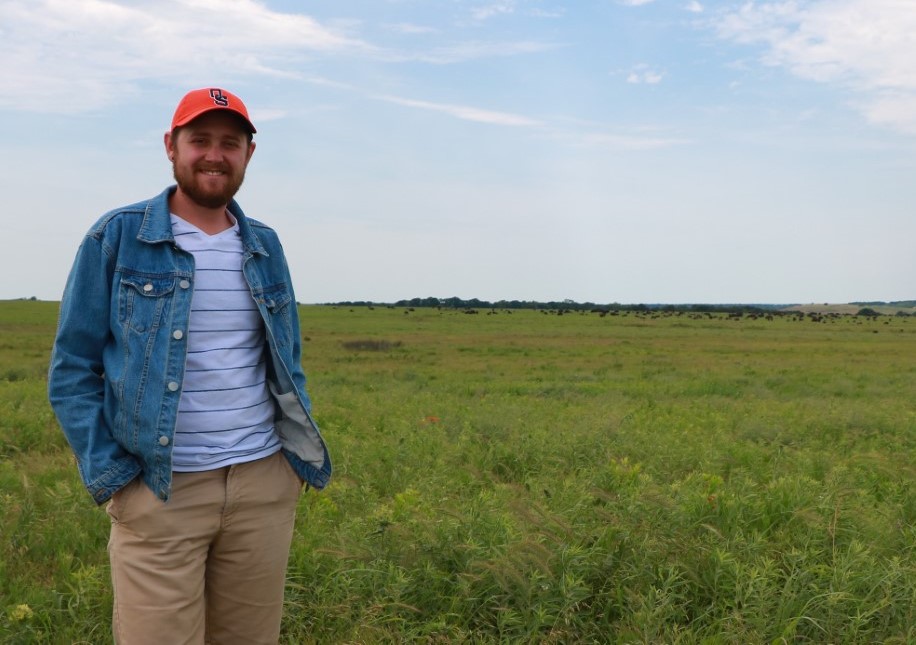Wildlife Chairs Projects
Research is an important aspect of the Land Grant Mission and for the wildlife chairs at Oklahoma State University. We seek to better understand natural resources through rigorous, objective, investigations. Our research is primarily carried out by graduate students, with the help of technicians, under the supervision of the wildlife chairs at Oklahoma State University. Research is intended to be applied in nature so that the results have impact on the people of Oklahoma and beyond. The results of our research are conveyed to the public through the Oklahoma Cooperative Extension Service though outlets such as fact sheets, field days, web sites, landowner visits.
Quail
Bobwhite Time Dependent Habitat Use
Northern bobwhite habitat use patterns are typically measured at one scale, which can be coarse (e.g. annual or seasonal), or fine (e.g. daily). However, we stand to gain insight by simultaneously examining multiple time scales. For example, on short timescales—such as a daily or hourly—bobwhite habitat use decisions may be driven most strongly by extreme weather because that immediately influences animal behavior. Conversely, on longer timescales—such as monthly or seasonal—bobwhite habitat decisions may be driven by vegetation composition and characteristics of the quail itself (i.e. sex, body size, etc.). Therefore, habit use patterns may be influenced by entirely different environmental factors at different time scales. Therefore, our broad goal is to disentangle the drivers of northern bobwhite habitat use at multiple time scales to better inform management. Specifically, we will:
- investigate the relative contributions of weather variability, land cover composition and configuration, as well as individual characteristics of the bird itself, to the habitat use of northern bobwhite and
- determine whether these responses are time-scale dependent. Samantha Cady, a Ph.D. student, is responsible for this project.
Bobwhite Habitat Management Project
Building on what we learned from the last 6 years of northern bobwhite research, we have started another 6-year bobwhite project funded by the Oklahoma Department of Wildlife Conservation (ODWC). This new project explores several management questions that will assist ODWC and landowners with bobwhite management. We are currently conducting research at Beaver River, Crosstimbers, Packsaddle, and Sandy Sanders Wildlife Management Areas through 2023. This study is focused on how factors such as soil type and controlled burning affect vegetation composition and arrangement relative to quail habitat. A key component of this study is woody plants and how woody plant densities, structure, and species composition relate back to quail habitat. Our research is significant because it is replicated across four ecoregions with different plant communities and is being conducted at multiple scales to determine how best to manage for quail cover. Overall, this research will aid land managers, both public and private, by giving them a better understanding of what management actions are best for quail in different regions. The results will have implications not only for quail, but also for other wildlife and livestock. John McQuaig, a MS student is in charge of this project.
Bobwhite Movement Ecology Project
Despite being heavily studied, little is known about the daily movement of the northern bobwhite. Our project seeks to determine how landscape variation and weather influence the movement of bobwhite. Movement is intertwined with other aspects of a quail’s life history making studying movement important for understanding how to manage for quail. Landscapes have variety of vegetation patches, topography, and features which may influence where quail spend time and how they escape predators, seek shade, and forage. Weather can influence how the landscape is used such that some areas are habitat only during certain weather conditions. By better understanding how landscapes and weather interact to shape movement, we will provide guidance to land owners on how to manage habitat to quail. Currently we’re using GPS technology to ask these questions. Birds are being trapped at Beaver River, Packsaddle, Sandy Sanders, and Crosstimbers Wildlife Management Areas in collaboration the Oklahoma Department of Wildlife Conservation. We will collect field data through the winter of 2021. Landon Neumann, a MS student, is responsible for this project.
Woody Plant Encroachment
Woody plants are expanding across North American grasslands and shrublands including the Great Plains. Increases in woody plants causes changes in wildlife species that occur in these landscapes. Current removal practices struggle to keep up with the rate of woody plant expansion. To better understand the consequences and potential management of woody plant encroachment, we are evaluating which aspects (such as height, density, species, and canopy cover) affect the bird community. Furthermore, the tolerance threshold of each bird species, including bobwhite, to the characteristics of woody vegetation will be identified. Understanding the characteristics that are affecting the bird community and at what point they become a problem will give land managers clear goals for management that are feasible and effective. We will collect bird and vegetation data in May-July in 2018-2019. Jennifer Knutson is the MS student working on this project.
Other Projects
Sericea Control
Landscape processes (e.g. fire), plant structure, and herbivore behavior are highly interactive, and were critical components in the evolution and development of grasslands. However, managing these interactions while actively battling threats like invasive species can be complex. Until recently, our understanding of these interactions has been limited to small, uniformly-treated studies that are not representative of the highly complex, multi-scale effects that are observed in nature. Understanding the interactions between management decisions (e.g. patch-burning and invasive species control), herbivore behavior, and biodiversity are critical to conserving grasslands for the future. Doctoral student Nic McMillan’s research at the Nature Conservancy’s Joseph H. Williams Tallgrass Prairie Preserve seeks to understand how spring and summer fires, herbicide application, and grazing interact to affect grassland plants and livestock production. His research is also contributing to the USDA funded Prairie Project at Oklahoma State by addressing how fire, grazing, and herbicide treatments affect woody plants generally, but also how they affect the invasive-exotic plant Sericea lespedeza. Nic’s research represents one of the largest replicated studies addressing these issues at a single site in the tallgrass prairie, with each of his eight treatments being 1,000-acres (or more) in size.
Prairie Project
The Great Plains of the United States is the epicenter of the nation’s livestock production, and many people in this area derive their livelihoods largely from the ecosystem services provided. However, this landscape is under stress as a result of environmental changes that include woody plant encroachment (WPE), variable climate, and an increasing size and intensity of wildfires. Our research will generate practical knowledge and workable strategies for rangeland, conservation, and management. Our goals for this project are to establish pyric herbivory (fire and grazing interaction) and mixed-species grazing (cattle and goat) at research sites and determine trends in livestock condition, WPE, and rangeland health. This research is being conducted at various sites throughout the Great Plains and is a collaboration with researchers from the University of Nebraska, Texas A & M, and OSU. Our research will lay the groundwork for changing the management culture of livestock production in the Great Plains region with the potential of at least a 20% increase in production and improved rangeland condition. This project is being conducted by Alexander Barnes, a PhD student.






